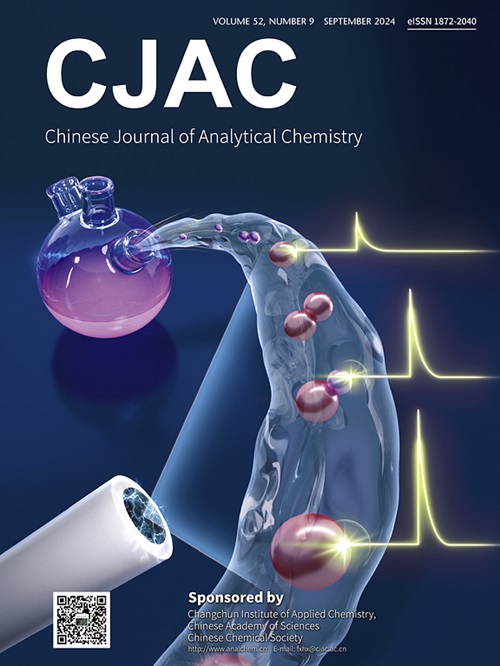Quality control methods established in view of the characteristics of component type of Yuhuang Shengji ointment based on HPLC, ICP-MS and GC e-nose
IF 1.3
4区 化学
Q4 CHEMISTRY, ANALYTICAL
引用次数: 0
Abstract
Yuhuang Shengji ointment (YSO) is a traditional Chinese medicine clinical prescription from Professor Wang Yehuang, a famous Chinese medicine professor in Jiangsu Province, China. It is used for the treatment of postoperative healing of anal fistula in clinic practice. It is composed of Corydalis Rhizoma, Radix Sanguisorbae Carbonisata, Natrii Sulfas, Alumen Ustum, Plant Soot and Borneolum. It has the effects of eliminating dampness, astringing sores, hemostasis, pain relief, detumescence and muscle regeneration. According to the characteristics that YSO mainly contains inorganic, organic and volatile components, the comprehensive quality control of the ointment was achieved by different analytical methods. The organic components in the ointment were qualitatively analyzed by ultra performance liquid chromatography coupled with quadrupole time of flight mass spectrometry (UPLC-Q-TOF-MS) to determine the main chemical components. High performance liquid chromatography (HPLC) fingerprint of the organic components of the ointment was further established. Inductively coupled plasma mass spectrometry (ICP-MS) technology is used to analyze the inorganic elements in ointment, which provides data support for the quality control of inorganic components. The flash GC e-nose is used for rapid detection of volatile substances in ointment, and the fingerprint of volatile components is established. The comprehensive use of these analytical techniques not only reflects the overall chemical characteristics of the ointment, but also helps to evaluate the consistency between different batches of products. This study successfully established a comprehensive quality analysis method, which provided a basis for the quality control of YSO. At the same time, it provides a more comprehensive quality control strategy for ointment which mainly contains organic, inorganic and volatile components.

针对鱼黄生补软膏成分类型的特点,建立了HPLC、ICP-MS和GC电子鼻法的质量控制方法
御黄生机软膏(YSO)是中国江苏省著名中医教授王业黄教授的一款中药临床处方。临床上多用于肛瘘术后愈合的治疗。主要成分为延胡索、三地血根、苦钠、铝叶、植物烟灰、冰片。具有祛湿、收敛疮、止血、止痛、消肿、肌肉再生等功效。根据YSO主要含有无机、有机和挥发性成分的特点,采用不同的分析方法实现了软膏的综合质量控制。采用超高效液相色谱联用四极杆飞行时间质谱(UPLC-Q-TOF-MS)对软膏中的有机成分进行定性分析,确定其主要化学成分。进一步建立了软膏中有机成分的高效液相色谱指纹图谱。采用电感耦合等离子体质谱(ICP-MS)技术对软膏中的无机元素进行分析,为软膏中无机成分的质量控制提供数据支持。采用闪蒸气相色谱电子鼻对药膏中挥发性物质进行快速检测,建立了挥发性成分指纹图谱。综合运用这些分析技术,不仅能反映软膏的整体化学特性,而且有助于评价不同批次产品之间的一致性。本研究成功地建立了一种综合质量分析方法,为青苏子的质量控制提供了依据。同时为以有机、无机和挥发性成分为主的软膏提供了更全面的质量控制策略。
本文章由计算机程序翻译,如有差异,请以英文原文为准。
求助全文
约1分钟内获得全文
求助全文
来源期刊
CiteScore
3.60
自引率
25.00%
发文量
17223
审稿时长
35 days
期刊介绍:
Chinese Journal of Analytical Chemistry(CJAC) is an academic journal of analytical chemistry established in 1972 and sponsored by the Chinese Chemical Society and Changchun Institute of Applied Chemistry, Chinese Academy of Sciences. Its objectives are to report the original scientific research achievements and review the recent development of analytical chemistry in all areas. The journal sets up 5 columns including Research Papers, Research Notes, Experimental Technique and Instrument, Review and Progress and Summary Accounts. The journal published monthly in Chinese language. A detailed abstract, keywords and the titles of figures and tables are provided in English, except column of Summary Accounts. Prof. Wang Erkang, an outstanding analytical chemist, academician of Chinese Academy of Sciences & Third World Academy of Sciences, holds the post of the Editor-in-chief.

 求助内容:
求助内容: 应助结果提醒方式:
应助结果提醒方式:


